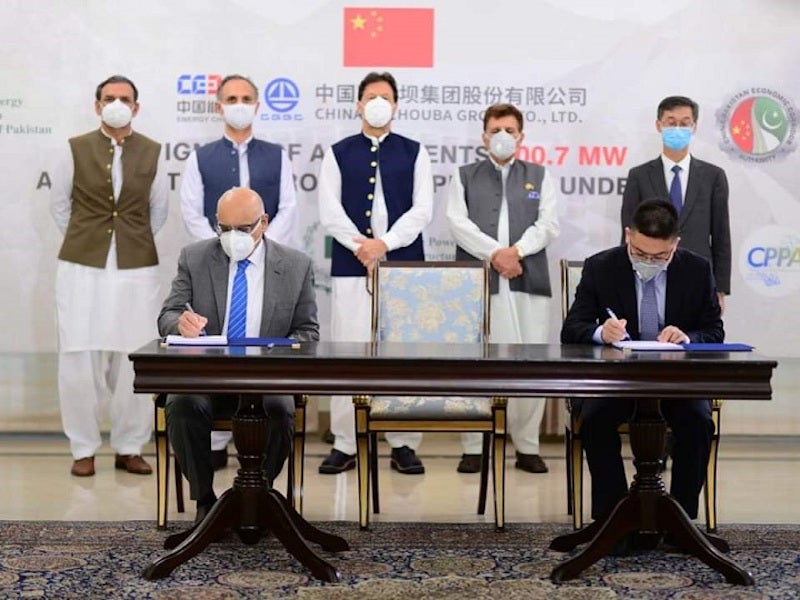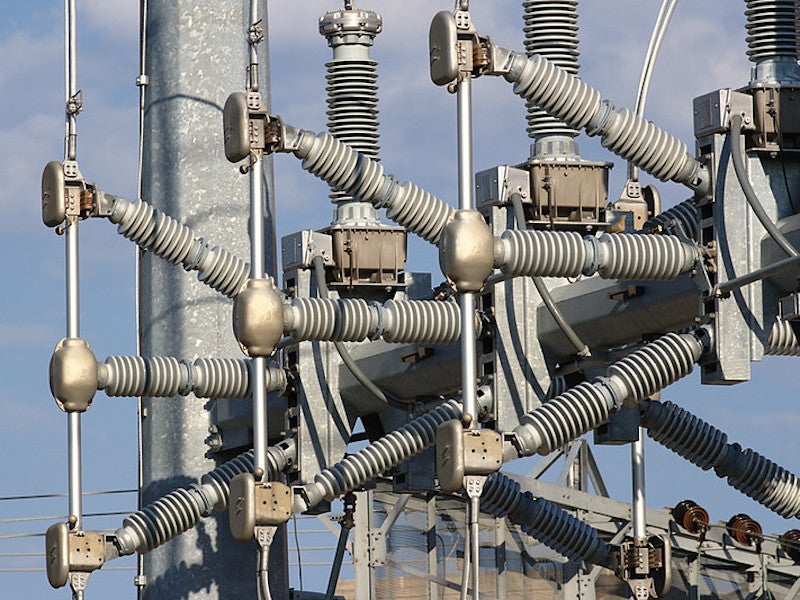The Azad Pattan hydropower project is a 700MW run-of-the-river hydroelectricity generation facility being developed on the Jhelum River in Pakistan occupied Azad Jammu Kashmir. It is being developed under the China-Pakistan Economic Corridor (CPEC) framework as part of China’s Belt and Road Initiative (BRI).
The project is being developed on a build-own-operate-transfer (BOOT) basis by Azad Pattan Power Private Limited (APPL), a joint venture of China Gezhouba Group (80%) and Pakistan renewable energy developer Laraib Group (20%). APPL will transfer the ownership of the project to the Government of Pakistan, after operating the facility for a period of 30 years.
China and Pakistan signed a £1.2bn ($1.5bn) deal for the Azad Pattan hydropower project in July 2020. It is the second major CPEC project agreement between the two countries after the £1.9bn ($2.4bn) deal for the 1.12GW Kohala hydropower project that was signed in June 2020.
The Kohala hydropower project is also located on the Jhelum River in Pakistan occupied Azad Jammu Kashmir.
The construction period for the Azad Pattan hydropower project is estimated to be sixty-nine months. Scheduled for commissioning in 2026, the hydroelectric facility is expected to generate more than 3.265 billion units of clean electricity a year.
Project location and development
The 700MW hydropower project is located approximately 7km upstream of the Azad Pattan bridge on the Jhelum River, near the Muslimabad village, Sudhnoti district, in Azad Jammu Kashmir, Pakistan. The project site is approximately 90km away from the capital city Islamabad.
Azad Pattan is one of the five cascade projects planned on the River Jhelum. The remaining four projects are Chakoti Hattian, Kohala, Mahal, and Karot.
The project site occupies approximately 633ha of land and is located upstream of the 720MW Karot hydropower project and downstream of the 640MW Mahal hydropower project.
The Private Power Infrastructure Board (PPIB) of Pakistan issued the letter of support (LOS) for the project in June 2016, while the project design was approved in December 2017 and the environmental approvals were obtained in March 2018.
Azad Pattan hydroelectric plant make-up
The Azad Pattan project will comprise a 90m-tall reinforced cement concrete (RCC) gravity dam with its crest 535m above sea level, a 170m-long and 20m-wide underground powerhouse equipped with four 178.9MW Francis turbine-generator units and 12 single-phase generator transformers.
The dam will create a 3.8km2 reservoir area and will have four spillway gates each measuring 14m x 22.5m x 22m. The project involves two diversion tunnels on the right side of the river that will be 400m and 495m long, while the width and height of both the tunnels will be 12.5m and 14m, respectively.
The powerhouse will measure 170m x 20m. Apart from four Francis turbine generators, it will house 12 single-phase generator transformers.
Water from the reservoir to the underground powerhouse will be released through four 8m-diameter headrace tunnels measuring 101m, 122m, 145m, and 160m long and four 6.5m-diameter penstocks. The design discharge capacity of each penstock will be 315m3/sec.
The project also includes four U-shaped tailrace tunnels measuring 156m, 184m, 211m, and 238m long respectively.
Power transmission and off-take
The electricity generated by the Azad Pattan hydropower facility will be purchased by the National Transmission & Despatch Company (NTDC) for distribution in the national grid.
The power plant will be connected to the existing 500kV transmission line from the Kohala HPP to the Maira Switching Station.
Contractors involved
China Gezhouba Group Company and China Gezhouba Group International Engineering were awarded the engineering, procurement, and construction (EPC) contract for the Azad Pattan hydropower project in June 2017.





